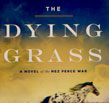 |
 |
08-14-09: 'American Fantastic Tales: Terror and the Uncanny from Poe to the Pulps' : Young Nations Scare Easily
We American have always been interested, no more than interested, invested is the best word, in fear. We want to create it in others while experiencing it ourselves as up-close and personal as possible without actual danger — that is, in our reading. But for all the joy we take in tales of fear, those works have received precious little critical attention. But that tide has started to turn. We saw the induction of H. P. Lovecraft into the Library of America. Now it's time for the horror genre itself.
The Library of America will be releasing two volumes of American Horror, edited by Peter Straub. The First, 'American Fantastic Tales: Terror and the Uncanny from Poe to the Pulps' (The Library of America ; October, 2009 ; $35), looks at work from 1805 to 1939, starting with Charles Brockden Brown and winding up with Robert Bloch. That's a hell of a big time span and one hell of a wonderful 754 pages to cover. I' thinking that readers might winder what they can find here, and I'm going to tell you that this is wonderful collection both for what you've read before and what there is to find.
I've read horror for mumble-mumble years now, and in two very distinct manners. I've read horror lately mostly for sheer pleasure, finding authors I like and working through new and old titles, from Clive Barker's 'Books of Blood' to Ray Garton's 'Bestial.' That is, reading as normal folks do. But I've also read quite a few of the works in this first anthology as part of my college education. So what we have in 'American Fantastic Tales: Terror and the Uncanny from Poe to the Pulps' is this outstanding reading experience, where I can revisit old work that I still love — for example, Nathaniel Hawthorne's 'Young Goodman Browne' — and follow it up with literary authors I respect and love, like Herman Melville ("The Tartarus of Maids") and find both of these in the same volume as an adolescent favorite, "The Black Stone" by Robert E. Howard. I'll never forget the first time I found "The Yellow Wall Paper" by Charlotte Perkins Gilman in a cheesy paperback anthology. These works were like a revelation to me, and indeed what they revealed is that American authors have always loved to write horror genre fiction. And we've done it well.
So here’s the perfect book for the academic doubters in your life and the perfect book for the giddy adolescent taste that doesn't know it's homed in on an American staple, a literary staple, and indeed, the sort of work that leads one on to serious stuff. Here's a book that collects more gateway drug experiences back and forth than any single volume you’re likely to find anywhere else. You can lean your literary friends to horror and you can lead your horror-genre fiction friends straight to the world of literature.
But mostly what you can do is to dip in, one tale per night, one journey into the American darkness as your world grows dark, and get a feel for all the terror there is out there that is yet to be experienced. Straub is a true genius — and not just as a write, but also as an editor. His introductions and notes are spot on and entertaining. And for the book lovers in us all, you can note that Chip Kidd is designing the books and the box that will hold them as a boxed set. So collectors, get your orders in early.
And prepare to stay up late.
|
|
08-13-09: Adam Rapp and George O'Connor Break Out the 'Ball Peen Hammer' : Beauty and the Bleak
How can it get worse? Worldwide economic depression. War everywhere you look, and lots of places we aren't looking. A global mass media in the service of multi-national corporations that are engineering the redistribution of the world's wealth and resources to an elite that is beyond wealthy. Craven politicians willing to subvert change for the better. A slow plague that kills millions. Are you awake at 4 AM?
Good. If you’re awake at 4 AM and can't bring yourself to check the news, if you’re awake at 4 AM and it's drizzling mist but not really raining, then it might be a good time to pick up 'Ball Peen Hammer' (First Second ; July 20, 2009 ; $17.99), written by Adam Rapp and illustrated by George O'Connor. Because yes, it can get worse. But that doesn't mean that it's all bad. You can squash us like bugs, rubs us out as if we're nothing, but you know, there'll still be a spark of humanity in there. Go ahead. Bring out the ball peen hammer. We've lived through worse.
In this case, most of us are lucky. We're dead, you and me, statistically speaking. A real plague, none of this invisible stuff that just hits the third world and kills us out of sight, out of mind. Those who are left are beyond desperate. But not beyond human. Two men in a basement; a woman and a tween boy in a loft. Death everywhere. Rapp and O'Connor create a vivid world, visually and with a powerful story, where two storylines inexorably and heartbreakingly converge. The text is sparse, and the story is strong. The images stark, shadowed and haunting. It's our world, but even worse.
Or is it, and that's the real question here. With a real Apocalypse like this, well, there's some comfort to be derived to know, to really know that your choices have been taken away. When there's nothing you can do, you don’t have to do anything. We on the other hand, have lots of choices now, and there's a lot we can do to live. And you know, if we care so much that we wake up at 4 AM and worry, if we care so much that we produce books like 'Ball Peen Hammer,' if we have the courage to read these books and face the world they show us, then maybe we have the courage to face this world, this coming day. Maybe.
|
|
08-12-09: Bill Wasik 'And Then There's This' : 'How Stories Live and Die in Viral Culture'
The story is the thing. When we open our mouths, fire up an email, when we communicate, we are all in that instant writers. We have events, people, ideas in mind, but when we bring them out of our own minds to present them to others, it is as stories.
Or it used to be as stories. But we have less time these days, and we're far more aware of what we're doing. Bill Wasik has a new word for our units of communication. He calls them nanostories.
You may or may not agree with the conclusions and assertions you'll find in Bill Wasik's 'And Then There's This' (Viking / Penguin Putnam ; June 15, 2009 ; $25.95), but there's no doubt you’re going to enjoy reading it. Wasik offers a fascinating vision of the transformation of human conversation in the instant mass communication. More importantly, he's a gifted and highly skilled communicator himself. 'And Then There's This' is the very definition of thought-provoking, as Wasik examines not only how we are changing our form of communication, but how it is changing us. He argues that as the mass media is inexorably shifted towards flashes-in-the-pan, so too, are our minds. We do not simply consume the news and our world as sound bytes, fads and flash mobs. We are increasingly unable to experience it in any other form. Our ability to engage in a longer-term, larger vision of the world around us is being eroded by instant messaging and instant gratification.
Wasik knows whereof he speaks. He's the man who invented flash mobs, the first of five experiments he conducts to explore the interstices of humanity and electronic communications. What you’d not necessarily expect is that Wasik is one hell of a good writer, who will keep you glued to the pages with witty prose that makes some pretty abstract concepts into ripping yarns. This book is, simply put, fun to read, no matter where you fall in the Internet Experience Spectrum. Seasoned insiders will quickly see that Wasik actually knows his new stuff, while utter newbies, technophobes and curmudgeons will see that he's a seasoned writer who knows his old stuff as well. It matters.
It helps that there's a palpable sense of fun at work on the printed pages here. We may be in the first stages of the End of Life As We Know It, but Wasik understands that even the Internetolypse can be, should be, taken with a grain of salt. As writers, as readers, the fate of stories concerns us greatly, whether we realize it or not. All humans care about stories and their fate even if they'd sooner self-destruct their video game avatar than they would open an actual paper-and-pages book. This paper-and-pages book might wean a few avatar-driving MMPORG away from their laptops. This paper-and-pages book is worth your valuable time and money, whether you agree with it or not.
|
|
08-11-09: Lucius Shepard Weighs 'The Taborin Scale' : Return to the Dragon Griaule
Some series are clearly started as such. The first book out is tagged with "Book One of Hooeyjicker Trilogy" and subsequent volumes are notched and numbered accordingly. But not every writer knows that the first book in a series will be that; still, the volumes that follow are pretty clearly labeled and the serial aspect of the books is quite apparent. Then there are the writers who create a person or a place that is so unique, they find themselves drawn back, again and again, over the course of their careers.
I first encountered the Dragon Griaule in Lucius Shepard's 1987 Arkham House collection 'The Jaguar Hunter' when I read the novella "The Man Who Painted the Dragon Griaule." Next up was the Ziesing publication of 'The Scalehunter's Beautiful Daughter.' Both were illustrated by J. K. Potter, whom readers will know to be one of my favorites. It will come as no surprise then, that I'm all over 'The Taborin Scale' (Subterranean Press ; February 2010 ; $35), also illustrated by Potter, also a novella.
One of the appeals of Shepard's Griaule stories is the way he weaves the fantastic aspects of his setting into a very everyday-feeling world. George Taborin inhabits a reality very close to ours, one that we can believe in quite readily. There are bars and bad marriages and rocky-but-stable marriages and hookers and coin collectors who are paradoxically not geek, but towering, huge men — George Taborin. He's the coin collector who spends a couple of weeks each year at the Dragon Griaule, enjoying the hookers and poking through the stuff he finds in hope of finding something special. Hopes that once achieved, prove to be more problematic than one would expect.
What you can expect in this little book is a gorgeous volume, chock full of JK Potter's best, and a slippery, surreal tale of sex, strangeness and ancient plans that envelope modern men. Shepard has spent a long time creating this particular series, and as a series, it has a depth and texture unlike any other. Of course, this is down to his style of creation. Shepard's work has an organic feel, and this story, the story of the Dragon Griaule seems truly alive, even though it has at its heart a creature whose heart beats only once each thousand years. Might it finally be dead? Shepard's not afraid to explore the philosophical as well as the physical, and he does both with incredible dexterity. There's no need to weigh the buy-it level of 'The Taborin Scale.' This is world that even in death, offers new life.
|
|
|
 |
|
|
|




